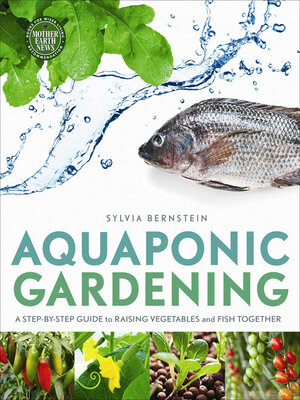Aquaponic Gardening
ebook ∣ A Step-by-Step Guide to Raising Vegetables and Fish Together · Mother Earth News Books For Wiser Living
By Sylvia Bernstein

Sign up to save your library
With an OverDrive account, you can save your favorite libraries for at-a-glance information about availability. Find out more about OverDrive accounts.
Find this title in Libby, the library reading app by OverDrive.



Search for a digital library with this title
Title found at these libraries:
| Loading... |
“I have always wanted to figure out how to do sustainable aquaculture in the context of my home garden. Finally I’ve got the book to help me do it.” —Paul Greenberg, New York Times–bestselling author, Four Fish: The Future of the Last Wild Food
Aquaponics is a revolutionary system for growing plants by fertilizing them with the waste water from fish in a sustainable closed system. A combination of the best of aquaculture and hydroponics, aquaponic gardening is an amazingly productive way to grow organic vegetables, greens, herbs and fruits, while providing the added benefits of fresh fish as a safe, healthy source of protein. On a larger scale, it is a key solution to mitigating food insecurity, climate change, groundwater pollution and the impacts of overfishing on our oceans.
Aquaponic Gardening is the definitive do-it-yourself home manual, focused on giving you all the tools you need to create your own aquaponic system and enjoy healthy, safe, fresh and delicious food all year round. Starting with an overview of the theory, benefits and potential of aquaponics, the book goes on to explain: System location considerations and hardware components The living elements—fish, plants, bacteria, and worms Putting it all together—starting and maintaining a healthy system.
Aquaponics systems are completely organic. They are four to six times more productive and use 90 percent less water than conventional gardens. Other advantages include no weeds, fewer pests, and no watering, fertilizing, bending, digging, or heavy lifting—in fact, there really is no down side! Anyone interested in taking the next step towards self-sufficiency will be fascinated by this practical, accessible and well-illustrated guide.
“An excellent primer for anyone considering home-scale aquaculture.” —Peter Bane, publisher, Permaculture Activist and author, The Permaculture Handbook
Aquaponics is a revolutionary system for growing plants by fertilizing them with the waste water from fish in a sustainable closed system. A combination of the best of aquaculture and hydroponics, aquaponic gardening is an amazingly productive way to grow organic vegetables, greens, herbs and fruits, while providing the added benefits of fresh fish as a safe, healthy source of protein. On a larger scale, it is a key solution to mitigating food insecurity, climate change, groundwater pollution and the impacts of overfishing on our oceans.
Aquaponic Gardening is the definitive do-it-yourself home manual, focused on giving you all the tools you need to create your own aquaponic system and enjoy healthy, safe, fresh and delicious food all year round. Starting with an overview of the theory, benefits and potential of aquaponics, the book goes on to explain:
Aquaponics systems are completely organic. They are four to six times more productive and use 90 percent less water than conventional gardens. Other advantages include no weeds, fewer pests, and no watering, fertilizing, bending, digging, or heavy lifting—in fact, there really is no down side! Anyone interested in taking the next step towards self-sufficiency will be fascinated by this practical, accessible and well-illustrated guide.
“An excellent primer for anyone considering home-scale aquaculture.” —Peter Bane, publisher, Permaculture Activist and author, The Permaculture Handbook






